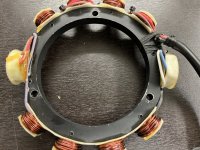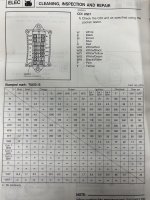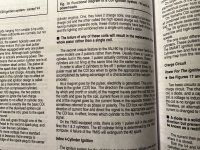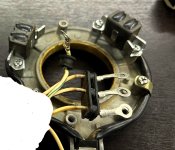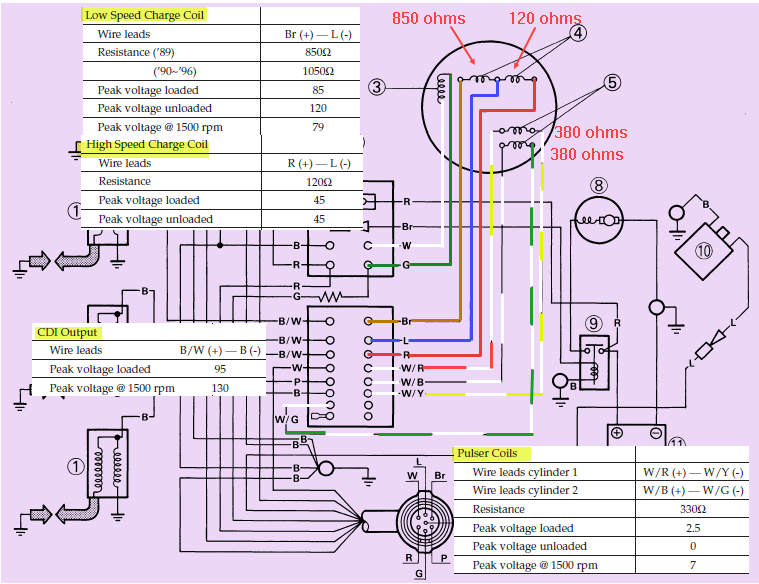Update:
I used a DVA and tested all components. Now when I say volts,all the outputs of the stator are AC voltage but the DVA converts to a stable and readable DC value. ( to all who may not be familiar with a DVA and its function)
. For the purpose of this post. I will simply refer to volts but with the implication that it is AC converted to DC via the DVA.
Stator- good - Brown - 208 volts , red - 115 volts , blue-115 volts. When I saw this I realized that the stator did not have a balanced power output per leg.
trigger good. Output from CDI to #1 cylinder was low. This was suspected all along but followed the brown wire when I would roll cyl 1 and cyl 3 in the CDI input. This was the issue where problem seemed to follow the brown wire on the stator. I would move it from #1 stator input to #3 input on the CDI and the problem would follow and reflect on the output of the CDI to coil. This led to my initial though that the stator voltage was out of phase, low or impaired and not fully charging the caps in the CDI.
Upon testing the stator with the DVA the brown leg was ~208 volts , blue was ~115 volts and red was ~115 volts . I summise that what was happening was that within the CDI the brown stator input and associated capacitor for #1 cylinder was rated to covert the full three phase 208 voltage to the output required for the #1 coil.
The blue and red stator leads and their respective positions on the CDI were built to convert ~115 volts down to the charge voltage for their respective coil outputs. When I was switching the stator input paths on the CDI around ,I was introducing 208 volts to caps in the CDI that were meant to convert 115 volt input. This is why I believe it appeared to follow the brown stator wire when in fact the other caps may not have been able to handle that voltage.
It does not square why when I put a 115 volt input ( blue wire) into the #1 stator input on the CDI the cylinder meant for 208 volts that it would fire. However, I swapped the CDI with one from CDI electronics and my problem is solved. I now also have a spare stator, and trigger assembly. These are my assumptions with obvious gaps.Can anyone lend any additional logic to this situation?
Thanks-
Havana





















